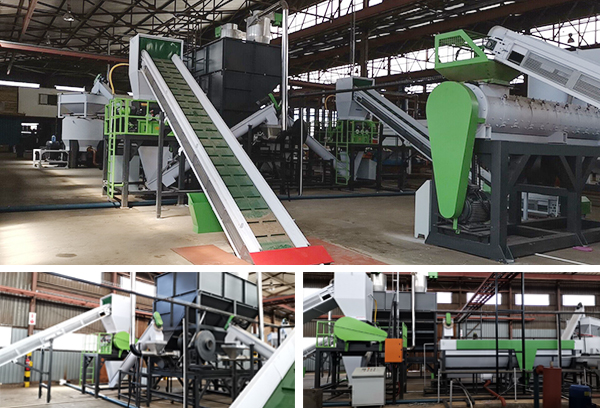With the popularity of smartphones and the Internet of Things, takeout services have developed rapidly in recent years. In 2019, the number of disposable lunch boxes in China exceeded 40 billion. This year, due to the epidemic situation, the use of disposable takeout boxes will exceed 45 billion.
After leaving the table, where will the 45 billion boxes go? Most of them are buried deep in nearby landfills, or drift to the sea along with rivers. In order to reduce the plastic pollution on such a large scale, the recycling of takeaway lunch boxes is imperative.
At present, 90% of the takeout lunch boxes are made of polypropylene (PP) instead of disposable foam material, and most of them are transparent, high rigid and odorless high-quality polyethylene, which has high recycling value. Therefore, the recycling of disposable lunch boxes has been highly valued by environmental protection departments and plastic recycling manufacturers.
Recycling process of PP takeaway box:
Front end: classification recovery -> packaging transportation
Back end: washing machine -> sorting machine -> crushing machine -> pelletizing machine - > Injection final product.

Although the recycling value of PP lunch box is very high, in fact, there are still many problems in the process of value transformation
● It is difficult to remove the odor, and the fermentation, oil stain and putrefaction smell of the remaining food in the lunch box will adhere to the box.
● The difficulty of sorting and washing is increased due to the contamination of different food materials, and the cost of water and wastewater treatment of recycling plants increases.
● Although most disposable lunch boxes are composed of PP, they also include cover, insulation layer, plastic film and other parts, which requires advaned sorting personnel and consumes time.
Due to takeout cannot be ignored, in order to solve these problems, here we put forward the following points:
For lunch box manufacturers, the recycling design of PP takeout lunch box should be carried out. For example, the inner wall of the lunch box is smooth enough to make the soup not easy to be retained; the same materials are used for the overall cover, box and bowl of the lunch box, and different materials should be easily distinguished to reduce the pressure of subsequent sorting. All manufacturers should unify the production standards, to ensure the nature and color of PP are equal, reduce the procurement cost, and let more capital flow to the recycling process.
For the takeout platform, as takeout industry builders, they should also take greater responsibility for environmental protection publicity.
They should use every media of the platform itself, including but not limited to mobile phone app, delivery staff uniform, city billboard, takeout bag, etc., to emphasize the harm of plastic pollution and the recycling of boxes, guiding consumers to participate in the whole process of recycling lunch boxes, help consumers establish the concept of environmental responsibility, and using electronic coupons to cultivate post meal cleaning boxes.
In addition, the takeout platform should also take advantage of its high mobility and strong regional characteristics to help the local municipal environmental protection department to establish a special recycling point for PP lunch boxes. It can also use the delivery personnel to recycle the lunch boxes and fully join plastic recycling.
For consumers, since they choose to take out, they should be responsible for the environmental impact. Clean the lunch box after the meal, clean up the kitchen waste, and recyclable waste separately. Only by doing these two points can greatly reduce the cleaning and sorting costs of recycling plant and improve the recycling rate of PP.
For businesses, who enjoy the benefits brought by takeout, they should bear the corresponding environmental responsibility. Businesses should choose the same material and the same type of lunch boxes, do not mark on the lunch boxes. If you want to write, please use a water-soluble paint pen, it is convenient to recycle and reduce the production cost of recycling plants.
Above, it can be seen that the only way to solve the current pollution of lunch boxes is to turn disposable lunch boxes into high-quality PP recycled materials, which requires policy support and cooperation from consumers, recycling plants and government departments.